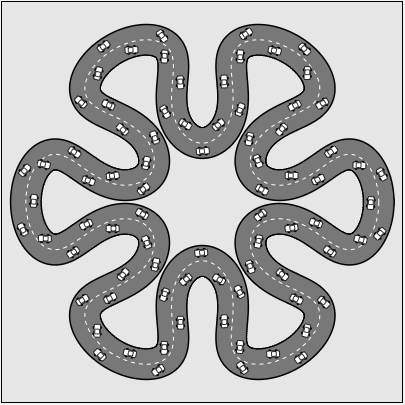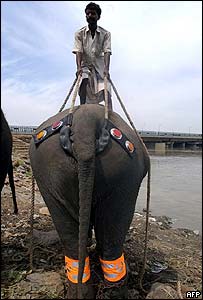When we woke up this morning Oxford was caked with a blanket of snow, about two inches thick and growing fast. Ruth, JTA and I thought that we’d make the most of it and go for a walk
along the Cherwell, and by the time we were heading back the snow was
ankle-deep. Reaching the corner of the street where we live we helped a few stranded motorists whose vehicles had taken one look at the hill near our house and said “fuck this for a
lark.” Specifically, we helped them by pushing their cars off junctions and out of the way of other cars. It didn’t take long to realise that the chaos that was the series of junctions
on the main road was only getting worse, and,
caught out by our own sense of social conscience (and perhaps at least a little inspired by a recent story we’d read), we decided that we could be doing more.
We trekked back to Earth and collected hardy boots, hi-visibility jackets, shovels, and
brushes, and made our way back to the junction. And, for the next hour or two, we worked at clearing the road and rescuing motorists. Before long there were others coming out of their
houses and workplaces and helping: pushing cars up hills and clearing snow and ice from troublesome parts of the road. Highlights included:
- Rescuing dozens of motorists who’d otherwise have been completely stuck.
- Shoveling clear an escape road for vehicles that couldn’t make it up the hill.
- Giving directions to motorists whose routes were blocked, to pedestrians whose buses had been cancelled, etc.
- Stopping all traffic in order to prioritise ambulances, as we’re on a hospital approach road. You’d be amazed how many motorists will do what you tell them when you’re wearing a
flourescent jacket.
- Getting thanked by a great number of people.
- Getting complaints from a minority of people who were angry that we were shovelling and not salting/gritting: presumably they thought that we were employed by the council.
- Meeting like-minded helpful people who came out of their houses and workplaces to lend a hand.
We returned to Earth and drank mulled wine with Hanna, a woman who lives up the road from us who came out and helped. She’d been expecting her boyfriend (who’s visiting for the weekend)
but he’s among the thousands of people stuck out in the snow, and even five hours after he was expected he hadn’t yet arrived. Then we made snow angels in the garden.
And because karma doesn’t believe in us, the universe repaid our kindness by having our boiler break down again (but in a different way) this evening. So now we’re sat in blankets in
the living room.

